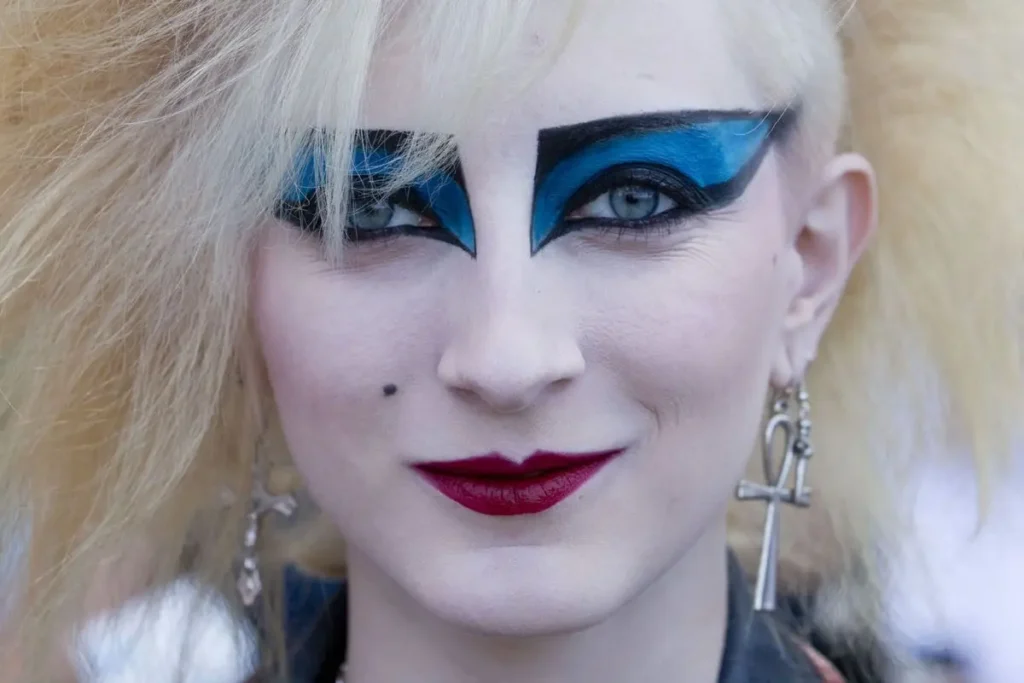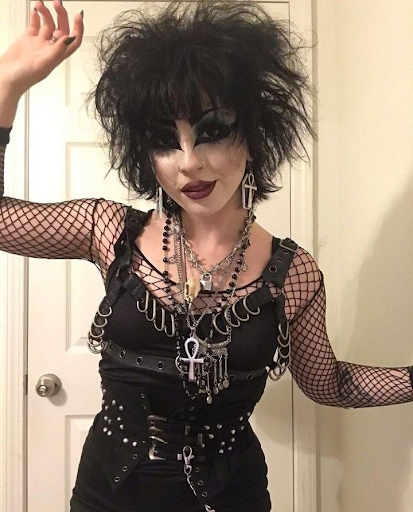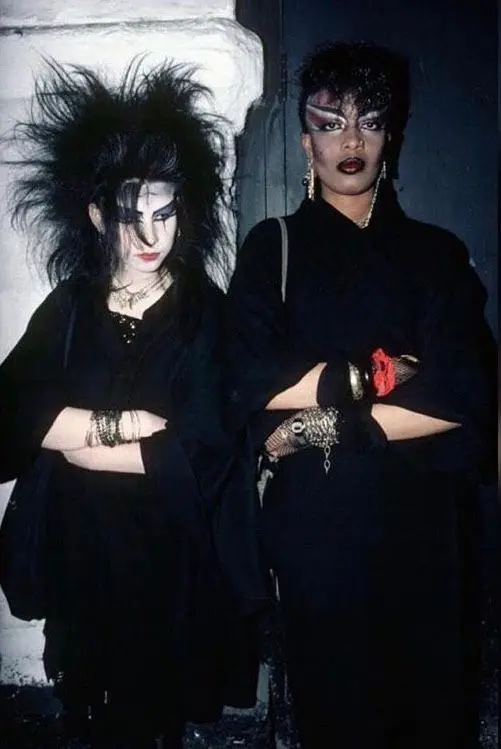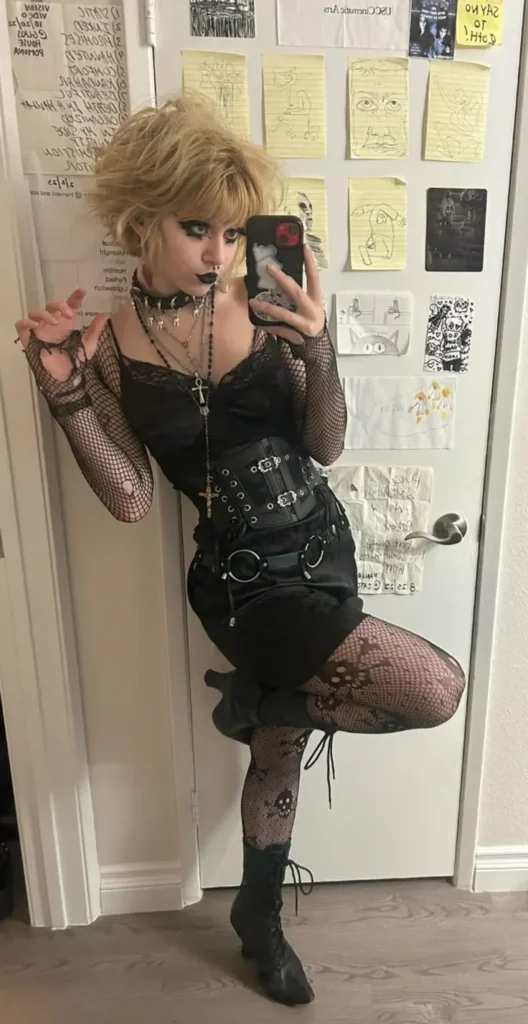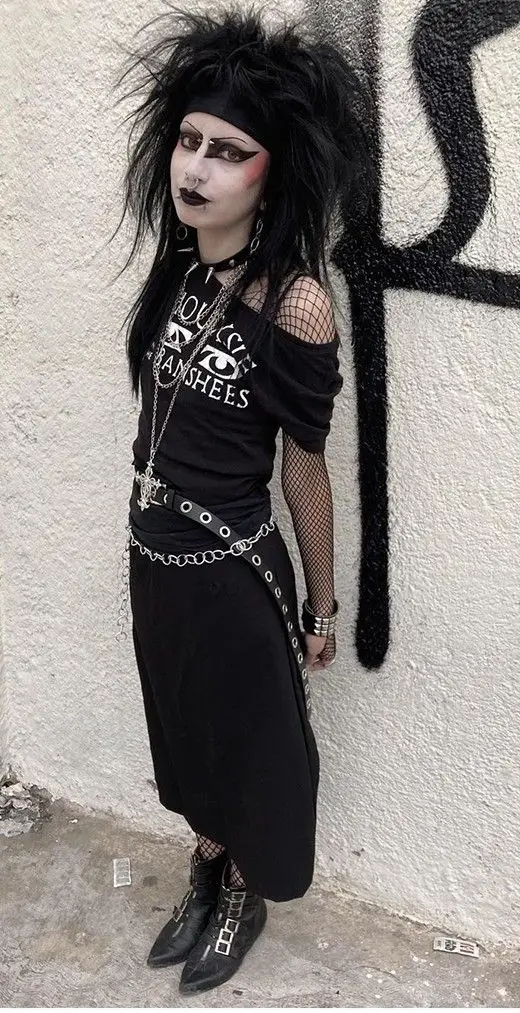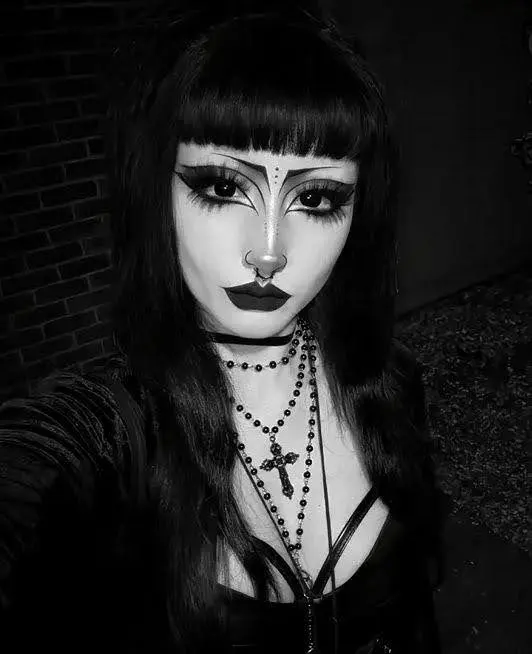The Traditional Goth (Trad Goth) fashion showcases the authentic Goth style which developed from post-punk music in UK. The Trad Goth style serves as the base for all modern gothic fashion styles including cyber goth, romantic goth and nu goth. The style maintains its haunting beauty and dark charm which drives fashion designers to create both runway collections and streetwear designs and unite historical melancholy with contemporary personal expression.
The article explains how the trad goth subculture developed while describing its core fashion elements which combine black clothing with DIY aesthetics and romantic-punk styles. It will show how Trad Goth style elements have shaped high-end fashion while creating new Gothic subculture styles.
The original trad goth style known as Traditional Goth emerged during the late 1970/80s. The style unites post-punk fashion elements with dark romantic aesthetics and vintage design elements to produce an enchanting dark appearance. The style exists beyond fashion because it represents a complete way of thinking. The Trad Goth style combines Victorian clothing elements with fishnet tears, corsetry, trench coats and dramatic accessories which people use in both nightclubs and their regular activities.
The Trad Goth movement started in late 1970s in England when punk music transformed into an artistic and introspective genre. The punk movement introduced fashion innovation through its use of ripped clothing and handmade patches. The musical landscape of the late 1970s saw artists and fans develop a preference for darker music that focused on poetic themes instead of political messages.
The aesthetic developed through the combination of other elements that included:
The early goth fashion style developed through the combination of Victorian mourning clothing, Edwardian suit designs, 1920s cabaret styles and punk DIY techniques to create a strong personal expression. The style existed to make people notice rather than to blend with others.
Trad Goth fashion presents itself through its dark color scheme, theatrical elements and vintage design elements. The style unites historical fashion elements with punk DIY principles to create an enchanting and artistic appearance.
Alexander McQueen established gothic fashion as a high art form during his time as a designer. Through his dramatic runway shows and his interest in death and beauty and macabre elements McQueen created fashion that expresses deep emotional values which define Trad Goth style. Through his designs he combined Victorian mourning clothes with medieval motifs and romantic deterioration to create a story that united somber elements with refined beauty. Through his exacting design methods and haunting design style, Alexander established himself as a leading fashion designer who merged gothic elements with high-end fashion while preserving the genuine spirit of the subculture.
Rick Owens known as the “Lord of Darkness” uses his fashion designs to transform dark aesthetic principles into high-end avant-garde clothing despite not being a traditional Goth designer. The 80s rock and DIY punk movement established Trad Goth but Owens transformed its fundamental elements into high fashion through his brutalist architectural and minimalist deconstructive approach. with his designs of knitwear, elevated boots and bias-cut jackets, Owens creates a luxurious post-apocalyptic version of Goth’s dark theatrical style which serves as a fashion inspiration for modern “gothadjacent” style.
The design approach of Ann.D through poetic minimalism and melancholic design philosophy matches the fundamental principles of Trad Goth. The Antwerp Six members created designs that use flowing fabrics, layered black clothing and androgynous patterns to create intense yet peaceful looks. Through her designs she expresses emotions instead of following current fashion trends because she draws inspiration from literature and emotional control. Through her collections she presents three core values which match Trad Goth fashion because they represent personal freedom, solitary existence and inner shadowy emotions.
Gareth Pugh uses his British design studio to create theatrical futuristic designs which transform gothic fashion for contemporary runway shows. Through his avant garde design methods he creates dramatic silhouettes and dark symbolic elements to transform gothic fashion for contemporary fashion shows. With the use of black vinyl and metallic materials with his precise tailoring techniques Pugh creates designs that show goth fashion heritage.
The alternative subcultures that interested Jean Paul Gaultier inspired him to use gothic elements throughout his design career. His designs unite corsetry with fishnet fabrics and dark theatrical elements which recall the early Trad Goth fashion style. Through his designs Gaultier promoted both gender flexibility and individualistic fashion expression which matched the spirit of 1980s goth clubs. Through his reinterpretation of Victorian and fetish-inspired elements he brought underground fashion elements to haute couture which demonstrated that dark styles could be stylish.
Through his romantic storytelling and dramatic design approach John incorporated gothic elements into his work. Givenchy and Dior received their first collections from Galliano who presented dark romantic designs with corseted gowns and historical references to funeral clothing. His designs link historical romanticism to high fashion drama which makes him one of the few designers who create couture pieces that embody genuine gothic elegance.
The authentic goth style requires these specific elements to achieve its original aesthetic.
Use pale foundation, dark eyeliner, and bold black or red lips.
It began in the late 1970s post punk era.
Trad Goth is rooted in 80s post punk; normal goth includes newer styles.
The Black outfits, dramatic makeup and 80s gothic music are big trends that have gothic fashion influence.
Yes, they mix classic goth with modern fashion.
